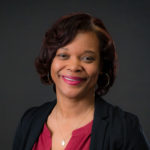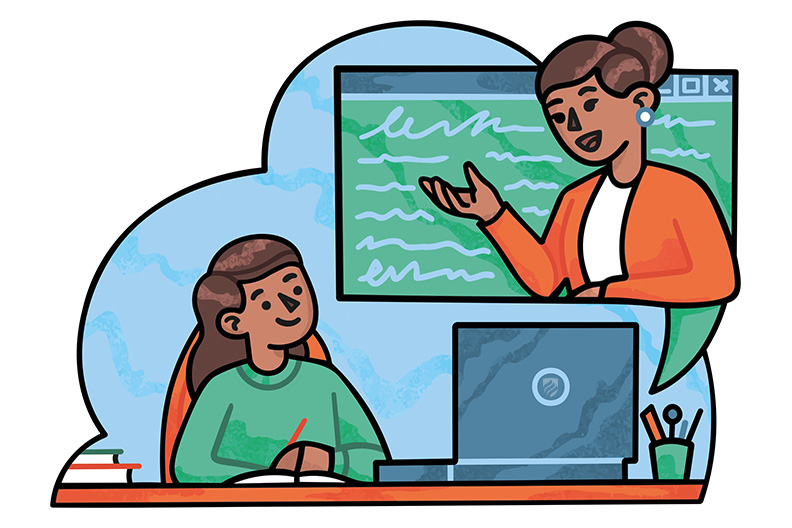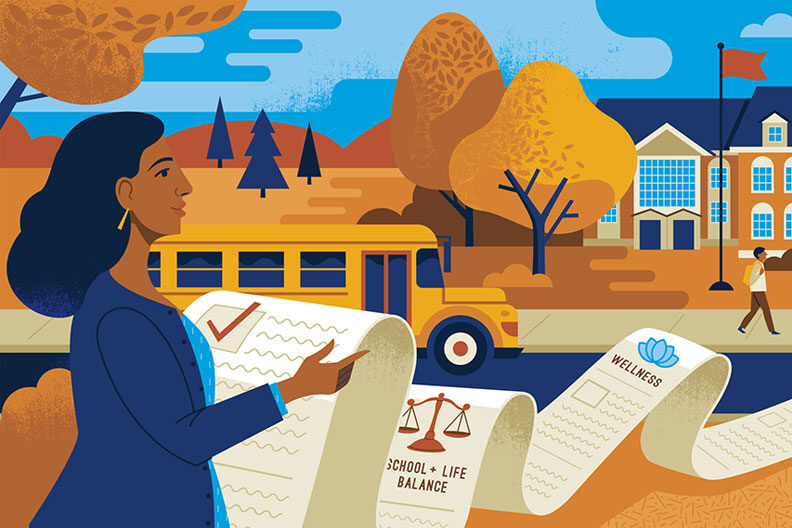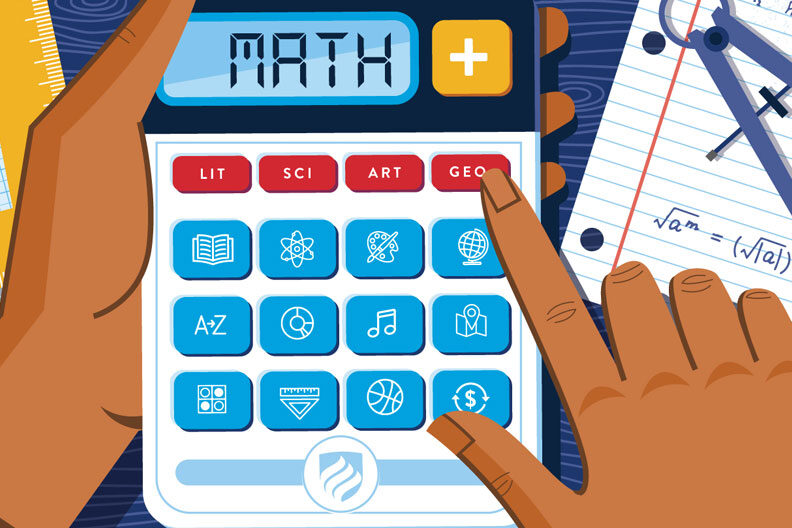Science, Technology, Engineering and Math, Oh My! We Need STEM Teachers.
CHALKING THE LINE | BY THERESA ROBINSON | 9 MIN READ
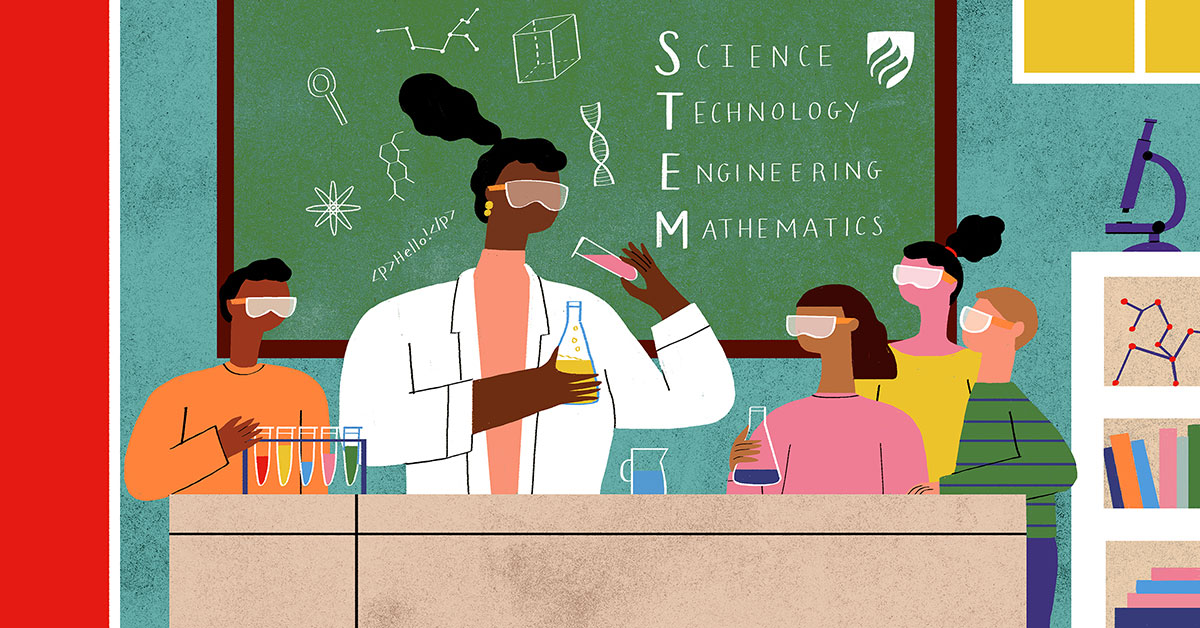
I feel like a broken record—or, for the 21st century learner, an error message—when stating we need more and better-prepared STEM teachers.
As we move into an even more digital, virtual, and e-learning environment, the role of teachers, especially STEM teachers, is even more evident.
These teachers are needed in order to prepare learners to be scientifically literate and supply the American workforce with its next generation of professionals. More importantly, parents need support with the specialized knowledge and pedagogical skills that STEM teachers have. It is projected that there are more than 7.3 million jobs available in the American workforce that require skills associated with STEM. This area of growth is not being met due to the lack of qualified applicants. The solution lies in preparing the next generation of students to fill those positions.
Initiating a response to the need for a scientifically literate populace prepared to fill this workforce demand can and should begin with education.
Children are born little scientists. They wonder how things work, they question, and they experiment with cause and effect in their everyday lives. Something as innocuous as a baby dropping a bottle from a high chair can be a moment of discovery—ah, gravity!
If children are born to inquire, teachers can support these early science skills and further develop process skills like observation, inferring and measuring.
But first, we need to find teachers who can fill this role. Amid the nationwide teacher shortage, there is a critical national and local need for more STEM teachers. In the spirit of scientific investigation, I will describe three perennial issues in STEM teacher preparation and in the field of STEM education:
- Defining STEM and best practices for instruction
- Elementary teacher confidence and interest in teaching STEM and
- Teacher diversity
These issues are followed by clarification statements and suggestions for solutions.
Issue: The term “STEM” (and Then Someone Added an “A” for “STEAM”)
Solutions: With such national attention being given to STEM, our friends in the arts did not want us to forget the importance of arts education in supporting science and math achievement.
We have not. We simply need to deconstruct the disciplines in order to make sense of how they integrate together.
The term “STEM” is catchy and easily interpreted due to its mnemonic approach; however, operationalizing how just those four subjects are integrated is complex. If you were to ask a group of people “What is science?” you will inevitably get a jumble of responses. I have asked this question to future teachers and received responses ranging from “the study of the physical and living world around us” to a laundry list of topics and concepts.
I would rarely get a more accurate description detailing science as both process and product. This misconception of science as simply a body of knowledge must be dispelled for future teachers.
Meanwhile, technology can be defined as a product of science that improves the lives of humans. And while engineering is a discipline, it is best understood as a process governed by principles of design. Exposure to engineering at a young age can affect the number of individuals interested in STEM fields. This researched fact highlights the importance engineering has in STEM education.
Lastly, we have to resolve an age-old debate: Which came first, science or math?
My bias as a science educator is obviously that the physical world came before the need to quantify it. But seriously, my last solution is showing how these separate but equal disciplines fit together. Once we have a clear understanding of the nature of the disciplines, teachers can learn how to integrate math and science with engineering and technology—and incorporate them within their lessons.
Issue: Elementary Teachers’ Confidence and Interest in Teaching STEM
Solutions: There have been several studies conducted to address science teachers’ preparation.
Common themes in the research include a lack of confidence in elementary teacher content knowledge and professional preparation. Many states have variable requirements which can lead to elementary teachers being ill-prepared to teach science content or have pedagogical understanding in science.
In another study, Atwater, Gardner and Knight (1991) found that teachers did not feel confident in teaching physical science or in performing experiments. The research is very clear that teachers need specialized content courses to address their content area needs and take away the stigmas and anxieties about science. Researchers found that the more science classes a participant took in the past, the more comfortable they were teaching science.
In addition to science knowledge pre-service, teachers need experiences in classrooms with real students in order to practice teaching while being mentored. Yilmaz-Tuzun (2008) found that adding field experience for a pre-service teacher boosted their confidence. Education programs should integrate a practicum experience that requires planning for instruction in collaboration with a mentor teacher and then teaching lessons in K-12 classrooms.
Elementary school teachers feel pressure to prepare students for standardized tests. Reading and mathematics became a new priority in instruction due to state testing. Teachers believed they had too much reading and math testing preparation to cover—they felt they had no choice but to cut science instruction significantly.
About 72 percent of teachers cut science instruction by 31 to 90 minutes per week. This cut was found to hinder students’ science abilities as they moved on with their academic careers.
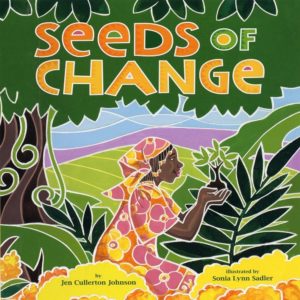 While reading and mathematics may have a grip on a teacher’s instructional time, there is a solution: Teach science through literacy strategies.
While reading and mathematics may have a grip on a teacher’s instructional time, there is a solution: Teach science through literacy strategies.
Young adult literature such as The Evolution of Calpurnia Tate by Jacqueline Kelly, or The Numbers Devil: A Mathematical Adventure by Hans Magnus Enzensberger, use science and math concepts like environmental conversation, evolution and numeracy as central themes. So do picture books like Seeds of Change by Jen Cullerton Johnson or The Grapes of Math by Greg Tang.
Issue: Lack of Diversity in the Teaching Profession
Solution: The public image of teaching as a valuable and worthy profession needs to be reemphasized in the public sphere. rebooting. Public perceptions teacher salaries, lack of autonomy, and a preoccupation with standardized tests have detracted from this image.
The Robert Noyce Teacher Scholarship Program, in collaboration with the National Science Foundation (NSF) and American Academy for the Advancement of Science (AAAS), recognized the significance of supporting future STEM teachers. The Noyce Scholarship was authorized in 2002 and reauthorized in 2007 by Congress to recruit and support STEM students to pursue careers in teaching.
The lack of interest in teaching, coupled with the lack of diversity, has become problematic for students from underserved communities and marginalized groups.
Current teaching and student demographics suggest that the majority of teachers are white females while the student population in K-12 schools is increasingly racially, ethnically and linguistically diverse.
According to the National Center for Education Statistics, white teachers accounted for 80 percent of the teaching force in 2015-2016, and, collectively, teachers who are Black, Hispanic, Asian, Pacific Islander, American Indian, and Alaska natives comprised 19 percent.
When teachers do not share the same cultural worldviews as their students, it is important that they pursue culturally responsive approaches to instruction, which can be challenging for traditionalists. The Framework for K-12 Science Education provides a rationale for the importance of using cultural awareness as a foundation for good science teaching: “When people enter into the practices of science or engineering, they do not leave their cultural worldviews at the door. Instruction that fails to recognize this reality can adversely affect student engagement in science.”
Culturally responsive science teaching should:
- Include the accomplishments of women and people from diverse ethnicities and cultures.
- Provide opportunities for students to participate in scientific and engineering practices that engage students in tasks that require social interaction and the use of scientific discourse.
- Build on student interests and identities.
In order to achieve the goals of improving science education for all, teachers must employ equitable strategies to engage all learners.
High-Quality Education for All
Meeting the need for better-prepared STEM teachers can improve the quality of science education for all students regardless of their socioeconomic status, race or gender. Whether a child chooses a STEM profession as a career or not, all children deserve a high-quality education.
As a nation, we can no longer afford to sustain the status quo as it relates to the achievement gap and access to high-quality STEM education for all. If we truly want to make America great, a scientifically literate populace willing and able to make informed decisions is an essential variable in the equation. A well-supported and highly trained teaching force can be our first line of defense.
Join the Ranks of STEM Teachers
Elmhurst University’s teacher licensure programs will help you develop into an effective, creative and inspiring educator. If you are ready to make a real difference, request more information about our programs today!
